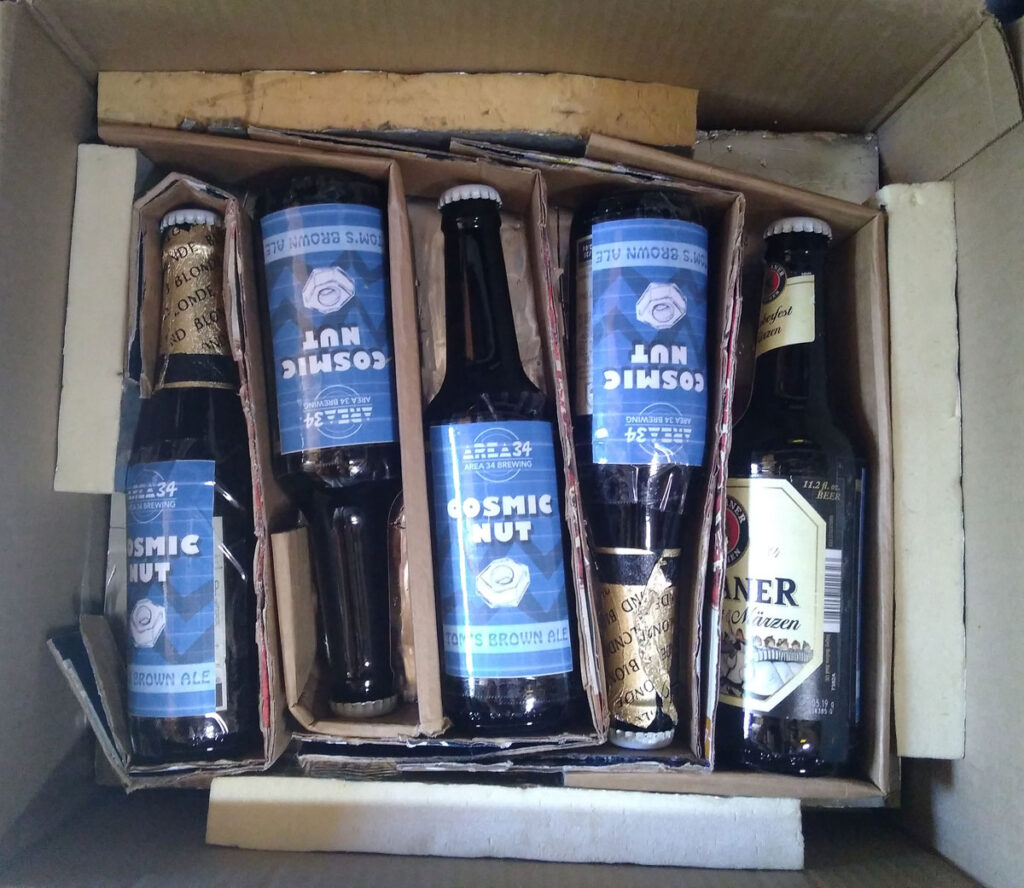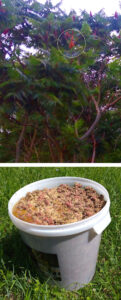Cheers to you! It’s 2019, history. I invite you to read a story that continues to be written. It’s a brewer’s journey. It involves family and friends, business and pleasure. Then there’s always the unexpected…
The spores have landed. After months in suspended animation, they now ravenously consume the sugars in their environment. They devour the flesh of saccharides. They replicate with their consumption, madly producing C2H6O, a volatile, flammable, colorless liquid — ethanol.
While this may seem like the beginning of a science fiction story, the truth is far more intoxicating. The second part of the story begins in the fermentation world of my first batch of beer. The first part of the story “Adventures in Beer: Part I” left us in the netherworld of carbonation. Let the tastings begin.
The tasters that shared bottles of my first batch of beer were brave family members and friends. If they have a biased opinion of my beer, blame the interview-style video I was capturing. These encounters follow in the list below, in order of appearance (left-to-right, top-to-bottom): Christian Lonsky, John Smale, Bruce Jaffe (and family), Steffan Lonsky and Marc Brandt.
My first experience with brewing was a milestone, as much for the process of doing things wrong as doing things right. Background of this learning experience is described in Part 1 of this blog. Repeating work processes yielded new insights and mistakes. Now four batches of beer into my journey, some of my initial expectations have been reset, some are proving to be buoyant. I’ve completed practical lessons in producing a product.
I’ve also learned more about the drinker in brewing the drink. I appreciate the role that beer can play in bringing people together. Whether you associate it with a bar or barbeque, beer is a solid contributor to social events. Early in my brewing journey, I was sure that taste was achieved by deliberate pursuit and painstaking accuracy. I’ve subsequently considered the vast array of beers that are produced in the myriad processes, recipes, achievements and mistakes of brewing.
Starting a business is like brewing — a good product takes time. Some things can’t be rushed. While there are recipes, each product is still crafted (custom-made). A brewery plan needs to consider all the people and processes that help it operate and grow. I’m forming a model to address the level of coordination and discipline a legal corporate entity requires.
I drafted the corporate charter for Area 34 Brewing with an attorney. His expertise was worth it. The business legal entity is important. The collaboration of members is built into its structure. The LLC nominally runs by the operating agreement and the company is recorded in state records. It adds credibility to applications for everything from licenses to loans.
Before finalizing the LLC, there were other fronts that started in the summer of 2019. During a visit to NY in July, I continued to discuss the idea of building the brewery with my family.
Cosmic Nut: Signal Received

I dedicated my second batch of beer to my brother Tom. I playfully named it “Cosmic Nut.” Fermentation was finished before I left CA on my summer trip. I bottled it and sent the labeled bottles on a UPS ride eastward to be delivered prior to my arrival. I captured a special tasting shared with my brother Joe.
Mission 3: Rings of Sumac

I brewed my third batch of beer in NY while I was visiting during the summer. I had been culminating an idea for sumac beer since learning of its suitability for making sun tea. I collected sumac pods from the trees. I steeped the pods for a week in a brew bucket with spring water. Then I started brewing the beer. The tea from the sumac pods was added to the boil after first briefly cooking the pods with the tea and straining them out with a colander.

I used too much tea in the boil resulting in 2 gallons more wort than was considered for the grain bill of the batch (the 5 gallon recipe was a collaboration with Stuart from Homebrew Supply Shop in Elmira). The fermented beer had a low concentration of alcohol due to the dilution. It had some taste profile of sumac, but was more like Kombucha than beer. On a positive note, I was learning much more by doing and using the equipment I’d purchased. I eliminated a 2-week bottle carbonation by pressurizing the fermented beer in a keg using CO2. There’s always more to learn about equipment and ingredients.
I’ve learned some simple rules of thumb through the alcohol production of my first batches: • Using more grain yields more dissolved sugars. • There is a relationship to sugars and alcohol, but it’s not direct. • Very high ABV (alcohol by volume) beers start with thick, sugary worts. • Light beer is not high in alcohol or grain bill.
While you’re waiting for beer to ferment, there is ample opportunity to reflect on the process. See the Hangar 51 video for some humor about the makeshift fermentation lab used in producing “Rings of Sumac”.
What the Fig?
My fourth batch of beer was ready to drink on December 24. I used a much higher grain bill (in response to Mission 3, above). With CA figs as one of the ingredients, I shared the beer as “What the Fig?” with family celebrating the holidays. The year ends with a good batch of beer and other experiences.
I trademarked the “Area 34” mark in June. In July, I purchased nano-brewery equipment (1 barrel capacity) from a craigslist seller. I reconsidered the potential of the location and the need to start small. With an agreement including my mother instead of my brother, I’m working on plans for a tiny brewery / taproom which will be a conversion of part of my childhood home.
Other accomplishments include a logo, website and the first Area 34 Brewing T-shirt. The response to my crowdfunding campaign, while small, was still encouraging. I continue working to navigate my way along new paths. It’s reassuring to have support from family and friends.
Sharing the Vision
If there is a local market and opportunity to reach brewery trail tourists, brewery customers will discover unique beers and experiences at Area 34 Brewing. The front room of the house is ideally positioned as a taproom. A 12 ft. x 14 ft. “mudroom” with a cinder block basement, the small footprint lends itself to be renovated economically. Brewing is heavily licensed and regulated, however, so restrictions to this concept are still TBD. I invite you to ask questions and offer suggestions. Brewery site detail and 3D-modeled sketches of the proposed taproom are available. Send me a note and I’ll send you a guest password. Send your message to peter@area34brewing.com The Area 34 Brewing members site is a growing set of documents at https://area34brewing.com/membernet
In 2020, I’d like to legally sell you a craft beer from the Area 34 Brewing taproom in Ledyard, NY. If and when I’m able to do that, I’ll have realized a milestone. Sharing this with family and friends would be a great pleasure. I hope you can join me. Peter
